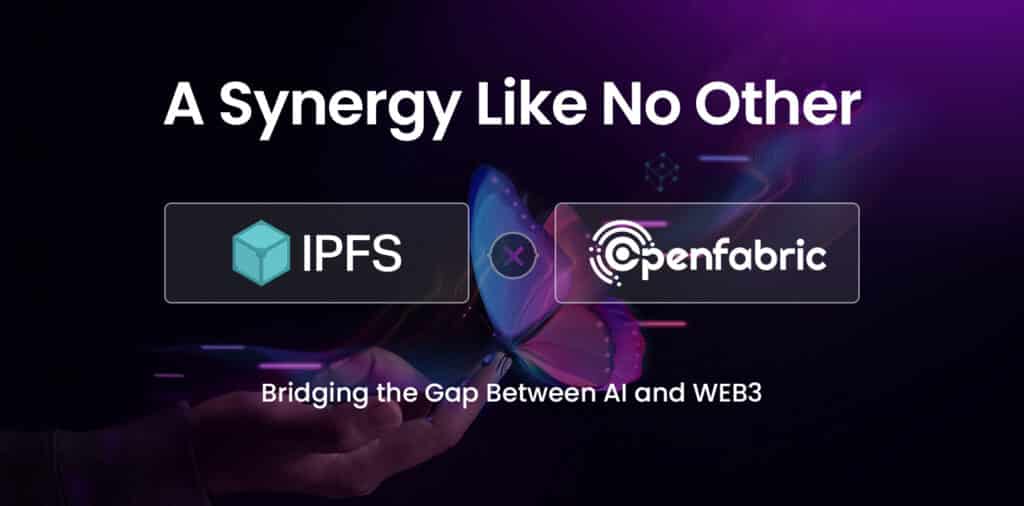
May 25, 2022 4 minutes read
How IPFS Is Bridging the Gap Between AI and Web3

Today, the internet is such an essential tool in our everyday life. It is part of our daily lives to communicate with friends, learn, consume media, and much more. But the web as we know it has a problem: the information on it is centralized. It’s all stored on big server farms and these are usually controlled by tech giants.
After years of being considered nothing more than science fiction, artificial intelligence (AI) is now a reality. In many cases, it is even a competitive necessity. It is hard to deny the endless possibilities that AI technology brings.
However, business leaders and decision-makers face a wide range of challenges in finding, implementing, and then scaling the AI tools that provide the right fit and deliver the desired results for different industries, applications, and use cases.
What AI does is help to unlock the potential of everyone – not just large businesses or high-performance workers – by endowing every idea, every insight, and every opportunity with the power of fast, cost-effective, and easily accessible machine-assisted scaling and insight. All of these can only be done by using a decentralized, open-source approach.
Understanding IPFS
IPFS began as an effort by Juan Benet to build a high-speed system at moving around versioned scientific data. It can be defined as a peer-to-peer (P2P) hypermedia protocol that envisions a web that is resilient, upgradeable, and more open. Launched in an alpha version in February 2015, it quickly caught on and by October of the same year it was described by TechCrunch as “quickly spreading by word of mouth.”
IPFS addresses the major concerns that make today’s web inefficient and expensive. The centralized web that we have today is limiting and not resilient. Webpages have a short lifespan, typically averaging 100 days only. Past that, it is gone forever. IPFS aims to offer a better alternative to HTTP and the web that it will help usher in will be decentralized, resilient, efficient, and able to preserve humanity’s history.
The decentralized system of IPFS consists of user-operators who hold a portion of the overall data. This results in a resilient system of file sharing and storage. When a file is added to the system, it is broken down into smaller chunks that undergo cryptographic hashing and are assigned a unique fingerprint. The file content identifier (CID) stored in a distributed hash table (DHT) is used by other nodes on the network to find it when requested. The use of a cryptographic hash makes the files on the network resistant to tampering and censorship.
At its core, IPFS is a versioned file system that can take files and manage them, store them somewhere, and then tracks versions over time.
A coalition that defines Web3
Openfabric and IPFS have teamed up to produce what can be easily termed as one of the defining products of Web3. The DOS that Openfabric runs on is powered by IPFS on the resource layer. Being a decentralized storage solution, IPFS also helps replicate binaries, ontologies, and data models. All these are necessary for users who want to make use of AI applications on the platform.
IPFS plays a foundational role in making Web3 applications of the future function. Meanwhile, the Openfabric platform is a prime example of how Web3 infrastructure can produce a secure and scalable system when it leverages the power of AI / ML tools and technologies. This ideal combination has enabled Openfabric not only to address the pressing concerns faced by AI platforms but also to promote a healthy, smart economy that goes one step ahead in facilitating fair transactions between the supply and demand of AI services.
Coupling AI and ML tools and technologies with the latest Web3 infrastructure has enabled Openfabric to produce something truly amazing. The resulting platform is not only secure and scalable but also promotes a healthy smart economy allowing it to create a built-in robust exchange medium that facilitates fair transactions between supply and demand of AI services. Thus, Openfabric leverages Web3 infrastructure to foster innovation and change.
The future of Web3
Critics argue that Web3 is still in its infancy and still has a long way to offer some practicality or value to its users. While this may be true to some extent, platforms like Openfabric have got a headstart and have truly built something that will help make the transition to Web3 and AI tools and technologies much easier. The future of Web3 is certainly exciting and there is great potential for innovative solutions that help solve major world issues. It is an immensely fascinating prospect that posterity will thank the innovators of today for the truly transformative technologies that resulted in the better and transformed world of tomorrow.

